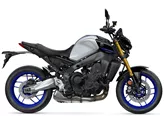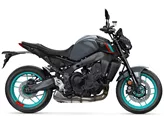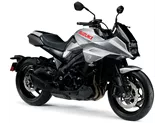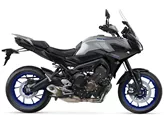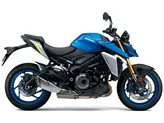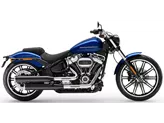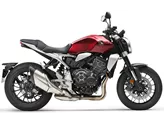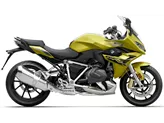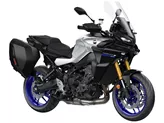Yamaha MT-09 2017 vs. Suzuki GSX-S1000 2015

Yamaha MT-09 2017

Suzuki GSX-S1000 2015
Overview - Yamaha MT-09 2017 vs Suzuki GSX-S1000 2015
The Yamaha MT-09 2017 and the Suzuki GSX-S1000 2015 are both naked bikes with similar technical specifications. However, there are some notable differences between the two models.
In terms of engine power, the Suzuki GSX-S1000 2015 has a higher horsepower of 149 HP compared to the Yamaha MT-09 2017's 115 HP. This gives the Suzuki model an advantage in terms of acceleration and top speed. The Yamaha MT-09 2017, on the other hand, has a torque of 87.5 Nm, while the Suzuki GSX-S1000 2015 has a torque of 106 Nm. This means that the Suzuki model has more torque, which can result in better low-end power and acceleration.
Both bikes have fuel injection systems and liquid cooling, ensuring efficient and reliable performance. They also have similar suspension setups, with upside-down telescopic forks at the front and swing arm suspension with a monoshock at the rear. The chassis of both bikes is made of aluminum and has a twin tube frame, providing stability and maneuverability.
In terms of braking, both bikes have double disk brakes at the front. However, the Suzuki GSX-S1000 2015 has a larger diameter of 310 mm compared to the Yamaha MT-09 2017's 298 mm. This gives the Suzuki model an advantage in terms of braking power and control.

Yamaha MT-09 2017
Both bikes have advanced rider assistance systems, with ABS included as a standard feature. The Yamaha MT-09 2017 also offers additional features such as a quickshifter and traction control, providing enhanced safety and performance.
In terms of dimensions and weights, both bikes have similar front tire widths of 120 mm and front tire diameters of 17 inches. However, the Yamaha MT-09 2017 has a rear tire width of 180 mm, while the Suzuki GSX-S1000 2015 has a wider rear tire width of 190 mm. This can result in better traction and stability for the Suzuki model. The Yamaha MT-09 2017 has a slightly shorter wheelbase of 1440 mm compared to the Suzuki GSX-S1000 2015's 1460 mm. Both bikes have the same seat height of 815 mm.
In terms of weight, the Yamaha MT-09 2017 is lighter with a kerb weight of 193 kg, while the Suzuki GSX-S1000 2015 is slightly heavier with a kerb weight of 209 kg. This can result in better handling and maneuverability for the Yamaha model.

Suzuki GSX-S1000 2015
The Yamaha MT-09 2017 has some notable strengths, including an Öhlins suspension, enhanced optics and sound with Akrapovic, a divine Magura HC3 radial brake pump, grandiose optics with Carbon2Race covers, and an effective combination of seat, footrests, and handlebar clamps.
On the other hand, the Suzuki GSX-S1000 2015 has its own strengths, including a legendary Suzuki engine, a sharp sound, rev-happy performance, harmonious tuning, pleasing design, strong brakes, and a taut chassis. The Suzuki model is also praised for not cheating on performance.
However, both models have their weaknesses. The Yamaha MT-09 2017 requires a financial outlay and a lot of working time, and certain parts may need to be registered. Additionally, the ECU Flash is not road legal. The Suzuki GSX-S1000 2015 is criticized for its old base, weak performance in the rev range, and load change issues.
In conclusion, the Yamaha MT-09 2017 and the Suzuki GSX-S1000 2015 are both capable naked bikes with their own strengths and weaknesses. The Yamaha model offers advanced features and enhancements, while the Suzuki model boasts a powerful engine and overall pleasing design. Ultimately, the choice between the two will depend on the rider's preferences and priorities.
Technical Specifications Yamaha MT-09 2017 compared to Suzuki GSX-S1000 2015
Pros and Cons in comparison
Pros and Cons in comparison
Yamaha MT-09 2017

In conclusion, after several stops throughout the season, I can look back on a great result. Both in terms of performance and looks, our MT-09 is perfect. The suspension was probably our most important issue. Where before there was clearly (too much) movement in the rear in fast corners, now it is ironed over without batting an eyelid. The STX 46 shock absorber is quite stiff in its basic configuration, but also manages to get through everyday life without being uncomfortable. Thanks to generous adjustment options, there is still room for individual preferences and uses. The function of the NIX 30 cartridge is also impressive. The response behaviour - especially under load - has improved significantly. There is now also much more reserve available when braking. Where before the fork went into block and the ABS triggered when braking hard with the original set-up, now the brakes simply continue to work effectively. In addition, the MT-09 now follows the intended line in the curve radius as if by itself - a pure pleasure. The sight and sound of the Akrapovic complete system are also pure joy, and the fact that it produces a few more horsepower is felt effectively, especially in the upper third of the rev range. The front wheel shoots even more willingly into the gallery in 2nd and 3rd gear.
Suzuki GSX-S1000 2015
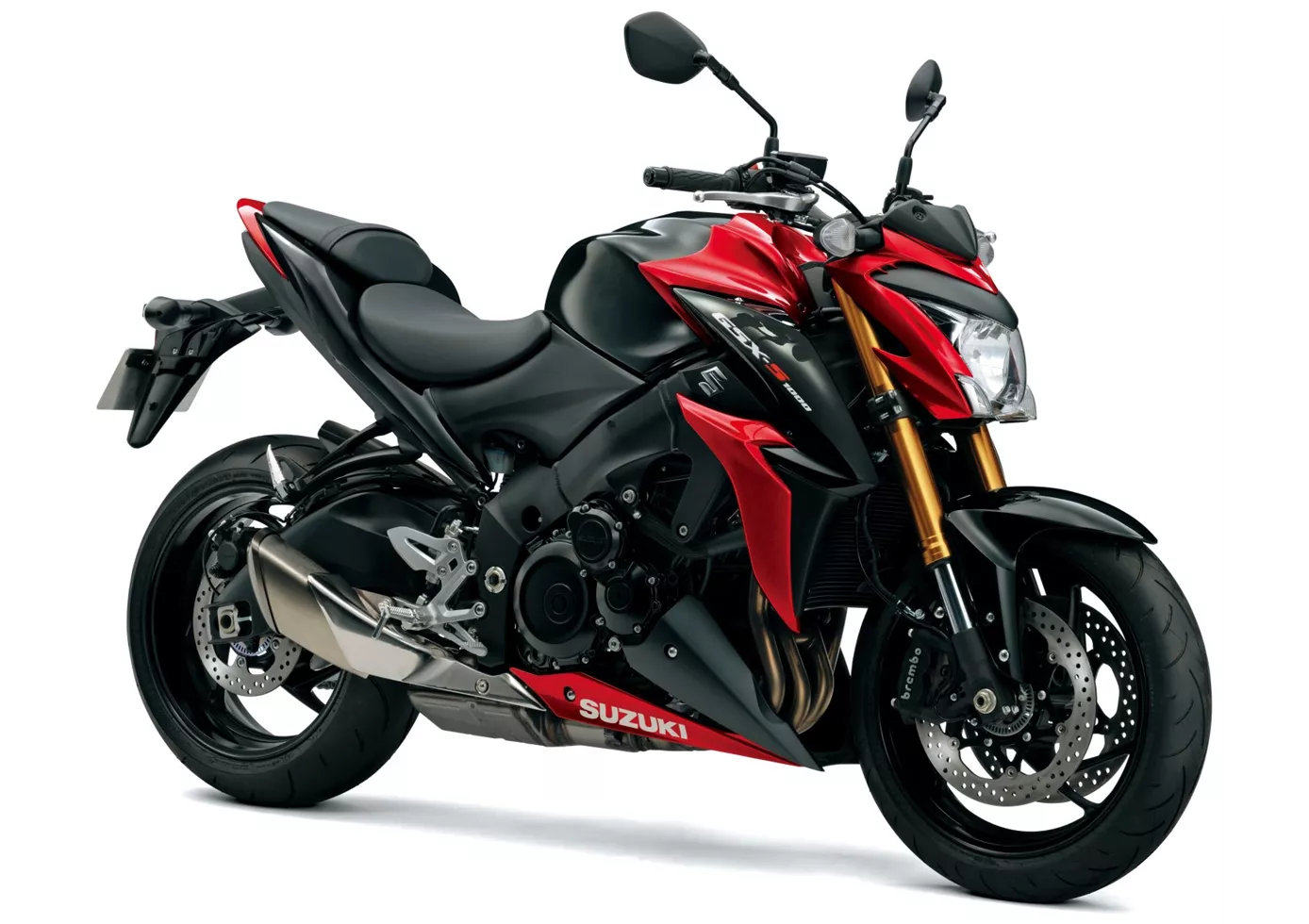
The GSX-S1000 is an honest motorbike in terms of performance and handling. You get even more than stated on paper, but you have to get the four-in-line up to speed first. As a rider, you have the feeling that you are still in command, even if the GSX-S is no longer completely without standard riding assistance systems - which work extremely well. Contact with the road feels direct, the dynamics are precise and transparent. Not only in terms of design can this naked bike give pleasure for many years to come, the somewhat outdated basis is quickly forgotten.
Price Comparison Avarage Market Price Yamaha MT-09 vs Suzuki GSX-S1000
There are a few key differences between a Yamaha MT-09 2017 and a Suzuki GSX-S1000 2015. In terms of price, the actual average price of a Yamaha MT-09 2017 is about 8% higher. Compared to Suzuki GSX-S1000 2015 there are more Yamaha MT-09 2017 bikes available on the 1000PS.de Marketplace, specifically 10 compared to 6. It takes less time to sell a Yamaha MT-09 with 73 days compared to 86 days for a Suzuki GSX-S1000. Since model year 2013 1000PS.de editors have written 57 reviews for the Yamaha MT-09 and 36 reviews for the Suzuki GSX-S1000 since model year 2015. The first review for the Yamaha MT-09 was published on 6/10/2013 and now has more than 39,900 views. This compares to more than 17,100 views for the first review on Suzuki GSX-S1000 published on 9/27/2014.




